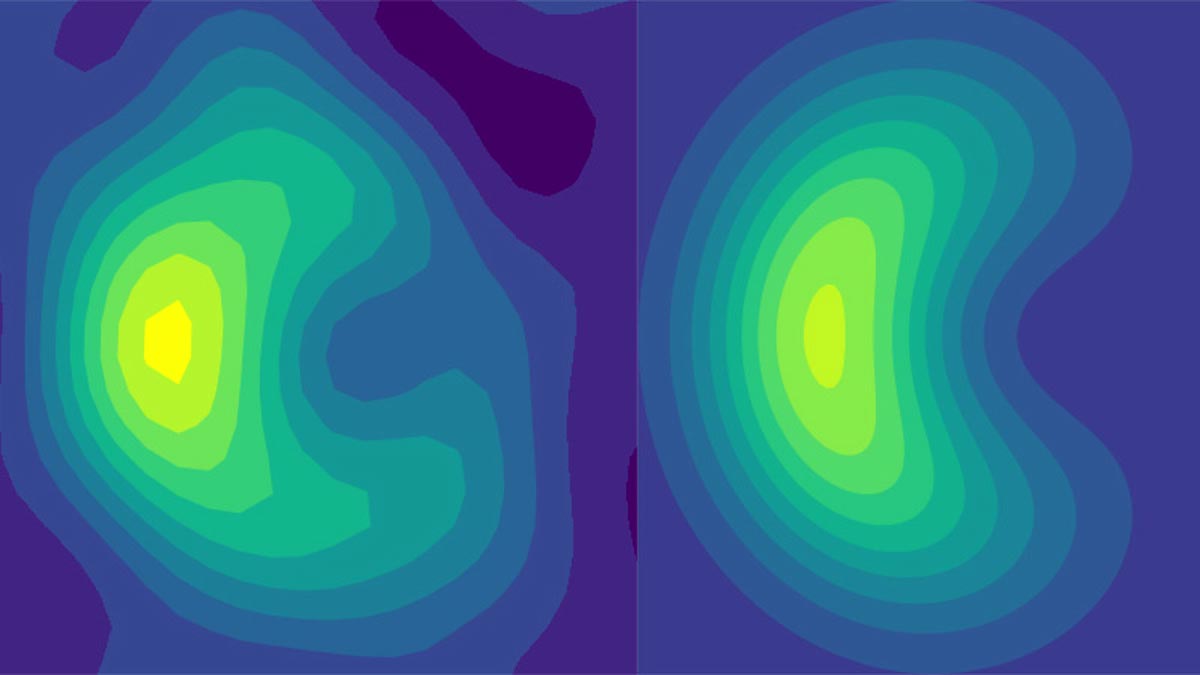

| Date | 31st, Aug 2023 |
|---|

Experimental results from a quantum computer (left) that match well with theory (right) are the first quantum-based method to show a quantum effect in the way light-absorbing molecules interact with incoming photons. Credit: Jacob Whitlow, Duke University
A quantum computer slowed simulated molecular quantum effects by a billion times, allowing researchers to directly measure them for the first time.
Researchers at Duke University have implemented a quantum-based method to observe a quantum effect in the way light-absorbing molecules interact with incoming photons. Known as a conical intersection, the effect puts limitations on the paths molecules can take to change between different configurations.
The observation method makes use of a quantum simulator, developed from research in quantum computing, and addresses a long-standing, fundamental question in chemistry critical to processes such as photosynthesis, vision, and photocatalysis. It is also an example of how advances in quantum computing are being used to investigate fundamental science.
The results were published on August 28 in the journal Nature Chemistry.
